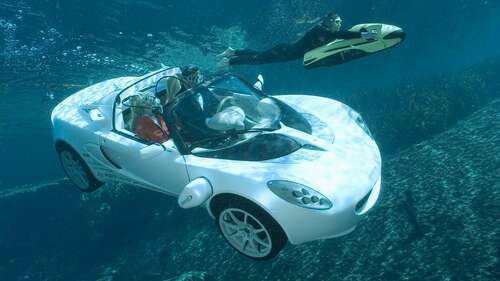
To prove it was more than a mere concept, Rinspeed invited select journalists to experience the car for themselves in the waters of Lake Geneva, Switzerland. It proved to be capable of doing exactly what its makers claimed, zipping around Swiss country roads before driving into Lake Geneva and using its jets to force its way beneath the surface. Making full use of the car’s onboard air supply, testers donned diving suits and watched as the car they were driving slowly turned into a fully functional submersible.
There were, of course, some limitations: The car was powered by six lithium-ion watercraft batteries, giving it far less capacity than the average road-going EV. Rinspeed, tellingly, never officially released any details about the car’s range, but obviously, it was never going to dive to the deepest depths of the ocean. It was also eye-wateringly expensive to build. The finished project reportedly cost Rinspeed more than one million euros to complete at the time, which is approximately $2.12 million in today’s money. The sheer cost alone ruled out any ideas of wider production, even as a novelty billionaire’s toy. After all, it’s extremely unlikely that most billionaires would cough up seven figures for a car that the (unfairly) hated Toyota Prius could overtake, even if it did double up as a submersible. Plus, Americans may not have been able to drive it all, as some models of the Lotus Elise were banned in the United States.

